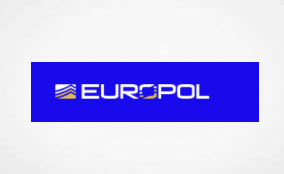Via Grey Dynamics
1.0 Introduction
Hezbollah maintains a strong presence in South America, particularly in Venezuela, where it operates as a proxy for Iran. This close relationship between Hezbollah and Iran has resulted from Iran’s covert operations in Venezuela. Venezuela plays a vital role in providing political, financial, and logistical support to Hezbollah. Another area where Hezbollah is present is the Tri-Border Area (TBA) of Argentina, Brazil, and Paraguay. This serves as a hub for illicit activities like drug trafficking, money laundering, and smuggling. Hezbollah is suspected to be involved in these activities to fund its operations.
2.0 History
2.1 Hezbollah
Logo of Hezbollah.
Hezbollah is a Shiite political party and militant group that operates in Lebanon and has a significant presence in the country. Hezbollah’s paramilitary wing is the Jihad Council. Its political wing is the Loyalty to the Resistance Bloc party in the Lebanese Parliament. With Iranian support, Hezbollah has created a so-called resistance that is committed to resisting occupation, the non-recognition of the State of Israel, and the liberation of Jerusalem (source).
Its organisation is based on three pillars:
- Military infrastructure: Hezbollah has a military arm called “The Islamic Resistance” (Al-Muqawama al-Islamiyya).
- Civilian institutions: Large-scale network of civilian institutions with the aim of improvement of the well-being of the Shiite population.
- Media activity: Its role is to disseminate the political messages and ideology of Hezbollah and Iran in Lebanon, the Middle East, and other parts of the world. They use a full spectrum of media and new technologies. This includes Internet presence, to shape public opinion, gain supporters and sympathisers, fundraise, and wage information warfare against Israel and the Western World.
(Source)
2.2 Hezbollah in Latin America
Since at least the early 1980s, Iran has operated an intelligence network in Latin America. Thanks to this, Hezbollah has expanded its operations to the region. The goal is to target Israeli and Western interests, taking its concept of Islamic Resistance worldwide.
The organisation has been accused of various activities in the region. Hezbollah was held responsible for the attacks on the Israeli embassy in Buenos Aires in 1992. It was also blamed for the bombing of the Asociación Mutual Israelita Argentina (AMIA), a Jewish cultural centre. Before denouncing a connection between Iran and the suspected terrorists, Argentine prosecutor Alberto Nisman was assassinated. Hezbollah’s External Security Organization (ESO) has evolved into an organised crime group (OCG) in Latin America. It has links to the Oficina de Envigado in Medellín in 2011 and the Brazilian PCC in 2014 in the Tri-Border Area (TBA). The TBA is now known as South America’s largest drug market.
3.0 Structure
Three main Hezbollah networks are operating in South America, mainly in Venezuela. These are the Saleh, Nassereddine, and Rada Clans.
- The Saleh clan. Is led by brothers Ali Mohamad Saleh and Kassem Mohamad Saleh. It has been identified as a network that facilitates weapons and drug trafficking across the Venezuelan border in collaboration with Hezbollah and the Oficina de Envigado in Medellín.
- The Nassereddine clan. Is led by Ghazi and Abdallah Nassereddine. It has acted as an intermediary between the Venezuelan government and Hezbollah. In 2009, Hugo Carvajal Ramos and Tareck El Aissami, who respectively served as Chavez’s head of military intelligence and interior minister, met with Hezbollah representatives in Damascus. It is suspected that it was a weapons trade between the Revolutionary Armed Forces of Colombia (FARC) and Hezbollah.
- The Rada clan. Is led by Abdala Rada Ramel. It is reportedly involved in drug trafficking operations out of Maicao. Ramel has stated that he is cooperating with Salman Raouf Salman, who is allegedly the head of Hezbollah’s External Security Organization (ESO). He faced charges related to the AMIA attack.
3.1 Plausible Deniability
Hezbollah’s criminal activities and organisational structure are designed to maintain plausible deniability. Therefore, the lack of substantial evidence makes it difficult to take legal action against the group.
In May 2020, the US Department of Justice (DOJ) charged Adel El Zabayar with drug and weapon trafficking charges involving Hezbollah, Hamas, and the Revolutionary Armed Forces of Colombia (FARC). The former head of intelligence Hugo Carvajal Ramos also accused Tareck El Aissami of attempting to recruit Hezbollah militants.
Despite the increasing number of accusations, the lack of publicly available evidence makes it challenging to prove Hezbollah’s presence in Latin America beyond a reasonable doubt. This strengthens their plausible deniability.
(Source)
4.0 Activity
Hezbollah and Iran took advantage of the mass migration of Lebanese immigrants to South America during the Lebanese civil war (1975-1990). They infiltrated their agents and recruiters among the Muslim migrants. Hezbollah is considered the most organised terrorist organisation in the world. Its involved in illegal financing activities, and the group funds its regular operations through all sorts of crimes (source).
Read more
https://greydynamics.com/hezbollah-in-latin-america-an-update/


















